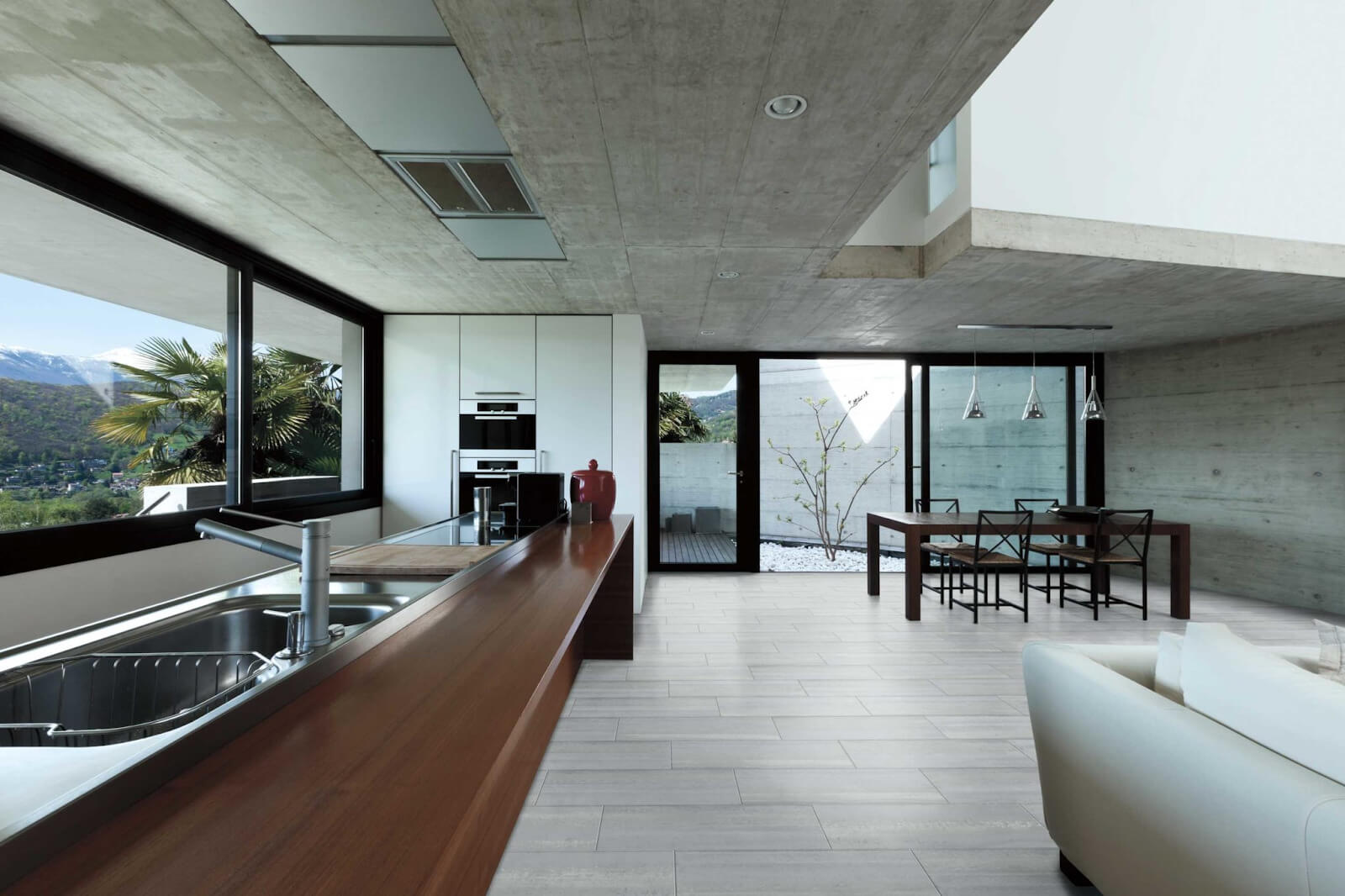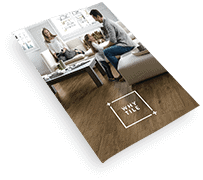Interior decor trends are rarely both fashionable and functional — until now.
Minimalism and universal design are currently two of the hottest trends in home decor. While the two aren’t exactly the same, these styles have plenty of elements in common that enhance both styles.
Ceramic tile’s clean lines, ease of maintenance, and design versatility make it a key material choice in both minimalism and universal design.
What Is Universal Design?
Universal design (UD) describes an area that has been designed to be accessible to everyone. In the home, this means every space should be accessible to people of all ages and abilities.
A simple example of UD in action is your floor plan. Do you have narrow hallways, steep staircases, or doorways with threshold lips on the floor? These are all cumbersome to fluid movement, especially for wheelchairs, walkers, and anyone that may need assistance to maneuver around the house. A home that embraces universal design has open rooms, wide staircases with two secure handrails, and fewer doorways.
UD will never go out of style; the trend is growing in popularity and the key idea behind UD is design that fits accessibility needs now and in the future, regardless if your abilities change or the occupants of your home change.
In addition, UD elements reflect highly desirable clean and organized aesthetics, making universal design as beautiful as it is functional (certainly an opportunity to increase the value of your home).
[Related: Increase the Resale Value of Your Home by Focusing on Just These Two Rooms]
Understanding the Minimalist Trend
Minimalism is exactly what it sounds like — using less in your home.
How do you achieve the minimalist look? By following the one in, one out policy. Minimalist advocates say that for every item you bring into your home, you should remove one item. The larger the item you remove, the better.
The goal is to minimize the amount of clutter in your home while becoming more mindful of what you are acquiring.
Another goal of minimalism is to place an emphasis on quality over quantity. By investing in a quality product, you can actually cut your long-term expenses, given that a quality product will outlast a less expensive option.
Other tips for minimalism include:
- Reduce storage space or combine storage with furniture to use up as little space as possible.
- Keep surfaces clear of clutter.
- Keep things simple — less is more—fewer throw pillows and memorabilia and choose a few key colors for decor.
- Use neutral, subdued colors on the walls and floor to create a fresh, clean look that inspires a calm feeling.
- Use limited textures or patterns to add depth and character to rooms.
[Related: 2019 Tile Trends: Geometric Tiles & Pattern Play]
Applying UD and Minimalism to Your Home
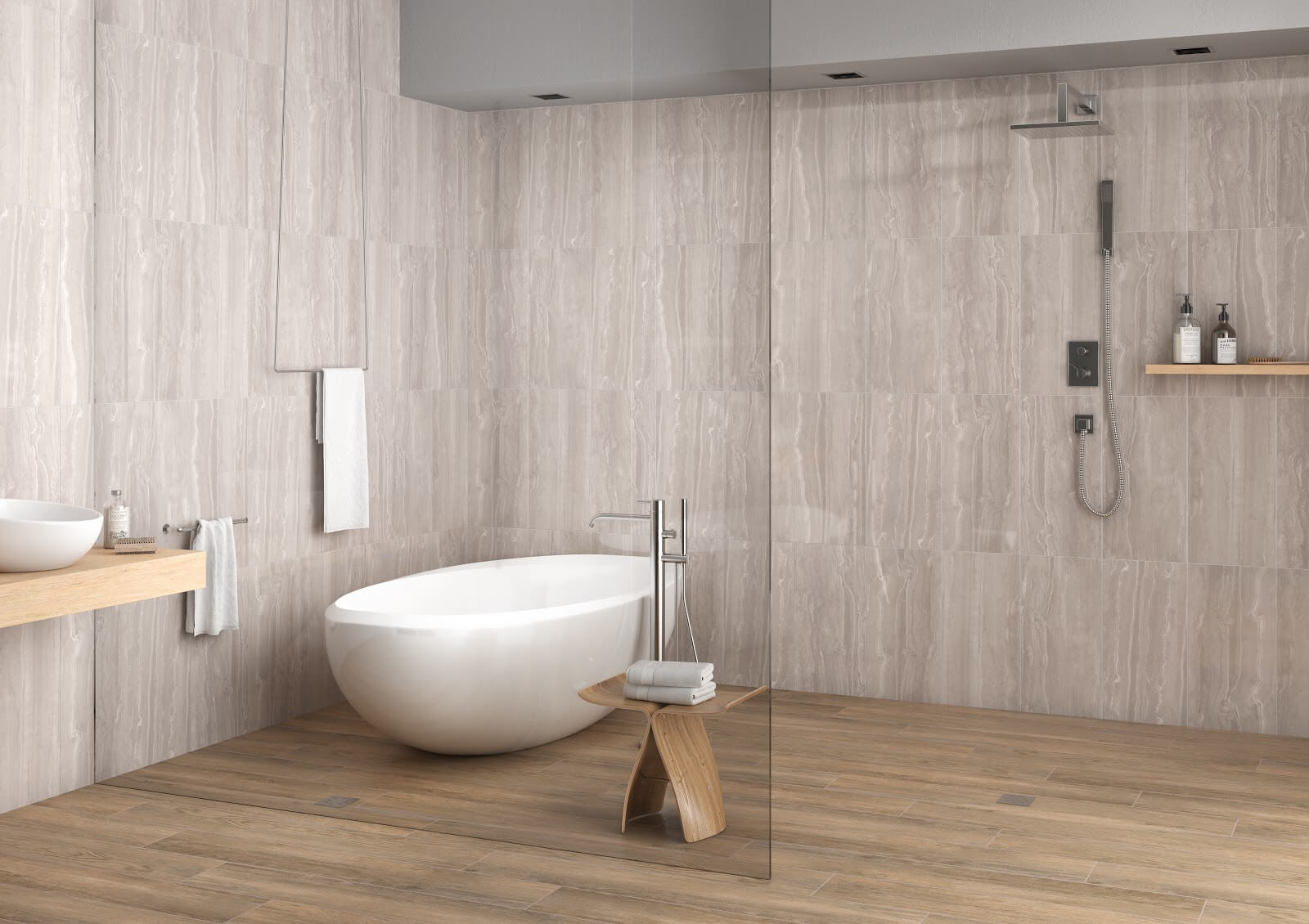
Universal design and minimalism easily go hand-in-hand.
For example, universal design suggests that base cabinets under sinks be removed or removable, allowing people in wheelchairs to use them more easily. By removing base cabinets, you would also be following the minimalist trend of removing storage space (so that you have fewer places to accumulate things).
As another example, both universal design and minimalism call for uncluttered surfaces, particularly around sinks and appliances. For UD, uncluttered surfaces mean there’s nothing that could encumber accessibility. For minimalism, uncluttered surfaces provide a clean sight line of the design as well as fewer objects to burden the mind.
As you start to update your home to meet the standards of one of these styles, you’ll see just how natural it is to implement the other. The result is a gorgeous, functional home that provides peace of mind in more ways than one.
Open Your Rooms
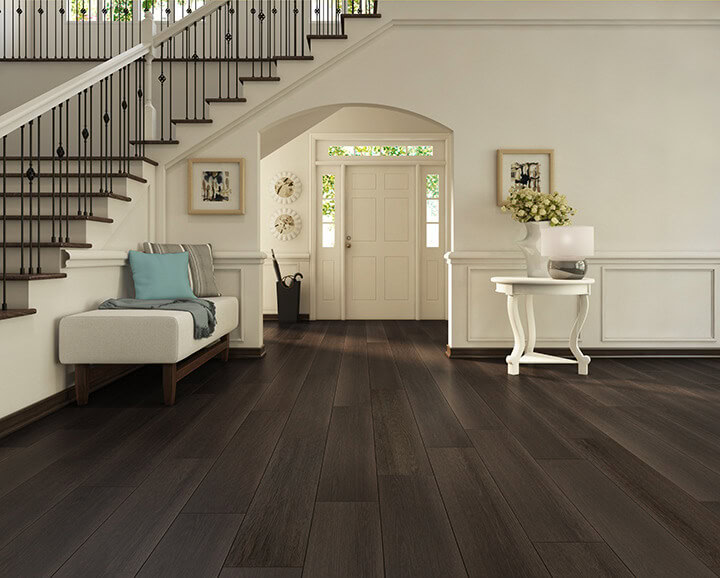
Open-concept space reflects both minimalism and universal design.
Consider that less is more and that barriers may impede free movement. Do you really need a wall separating your entryway and your main room? Removing nonweight-bearing walls and doors opens rooms, drawing the eye further across the space and making your home feel larger than it actually is.
Less wall space also means less empty space you need to fill with paintings, furniture, and other decorations (minimalism). When you place an emphasis on quality materials to accentuate main rooms, ceramic tile is a timeless option for large, open spaces and has a lower life cycle cost than other less durable materials used for floors.
When two different flooring types meet, they often form a threshold or lip. One way to remove this kind of barrier is to use one flooring type throughout your house. Ceramic tile is ideal for continuous flooring, as it has functional benefits that allow it to be used in any rooms, from the kitchen, to the living room and bathroom, and even for outdoor living spaces. Using the same flooring throughout these spaces will eliminate unnecessary thresholds and create a beautiful sense of continuity throughout your home.
Declutter Your Kitchen
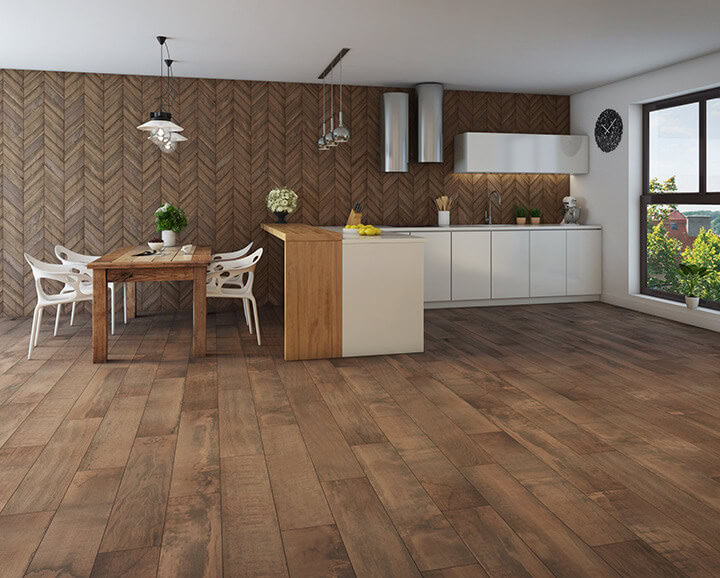
Kitchens are prone to clutter. Coffee makers, toasters, microwaves, utensils, and more tend to sit on countertops all day. Even with ample countertop space, common kitchen items can make the kitchen look busy.
To achieve a minimalist look, you’ll need to remove countertop clutter. You also want to keep storage to a minimum, which means fewer cabinets lining the walls. Reducing storage space is integral for minimalism, as it forces you to get rid of items you don’t need.
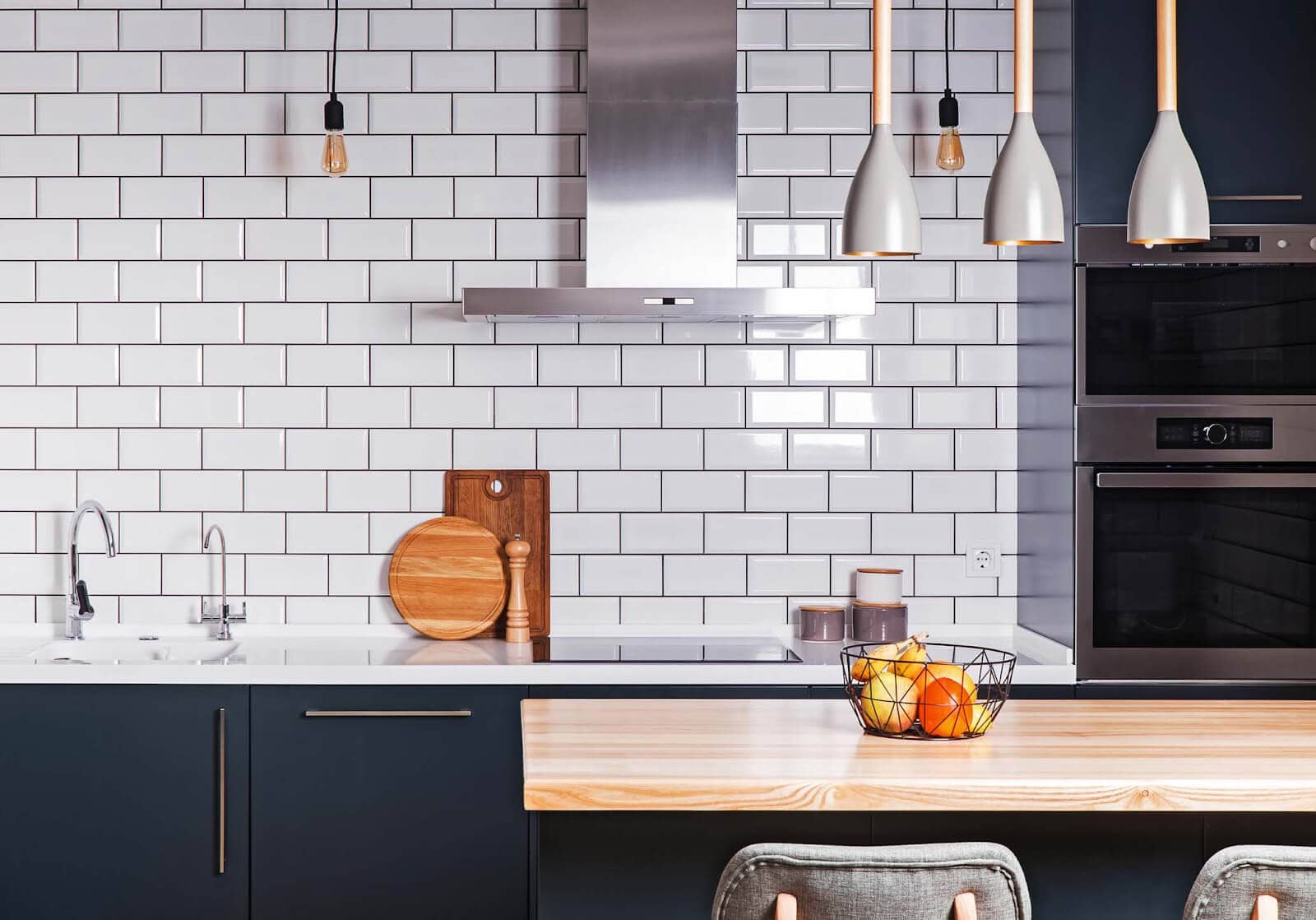
Once you cut back on items, you will have also achieved a universal design concept. UD suggests you have open counters so you can support yourself while maneuvering around the kitchen. In smaller kitchens where mobility is already more difficult, decluttering will help immensely.
In UD kitchens, tile is a popular material for backsplashes, counters, and flooring. Not only is ceramic tile long-lasting and durable (a quality product), but it’s also fire-resistant, water-resistant, and stain-resistant — all everyday hazards in kitchens. If you do spill, tile can often be cleaned with only water (which simplifies your cleaning supplies).
California’s universal design standards also suggest the following standards:
- The kitchen is easily accessible with plenty of open space.
- Sinks have 4 feet of empty counter space around them and use lever controls.
- Appliances have 4 feet of clear space around them.
- Light switches are placed 4 feet above the ground and power outlets are placed 15 inches above the ground.
- Counters should have an additional 18 inches of clear space for cutting food.
Freshen Up the Bathroom
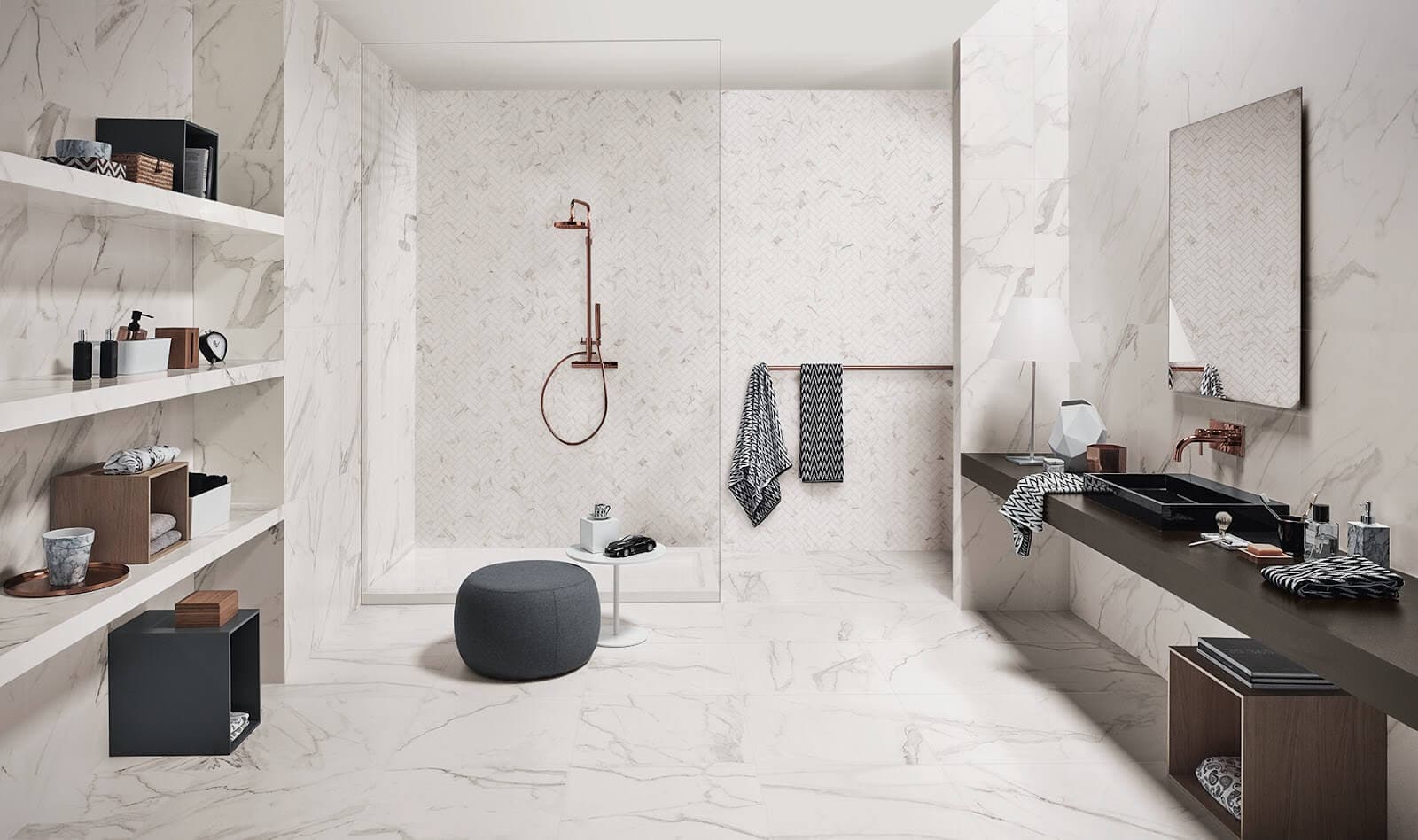
This bathroom is the perfect example of how minimalism and tile work together beautifully, all while following UD standards. Curbless showers are representative of universal design since they don’t have a threshold to enter. Ceramic tile also has slip-resistant styles, providing safe options for curbless showers.
Tile is also used on the walls of this shower, which is common for both aesthetic value and the function of the material. Ceramic tile is resistant to bacteria, mold, and mildew, three problems that humid rooms such as bathrooms can deal with regularly.
Tile can also serve as the only surface material you need in a bathroom because it can be used on the floor, walls, countertops, and even ceiling! Using a consistent material in a room is perfect for minimalism. The marble-look tile used on the floor and walls in this bathroom reflects the light and brightens the room.
[Related: The Complete Guide to Bathroom Tile]
California’s universal design standards suggest that at least one bathroom (preferably a bathroom on the main floor) include these elements:
- Walk-in/roll-in bathtubs or showers (such as a curbless shower)
- Adjustable showerhead, rainfall showerhead, or steam shower for accessibility
- Grab bars near the shower
- Large, uncluttered countertops that are at least 4 feet wide and not too high off the ground
- A 4- by 6-foot open area for maneuverability
- Lever faucets for the shower and sinks
Around the House
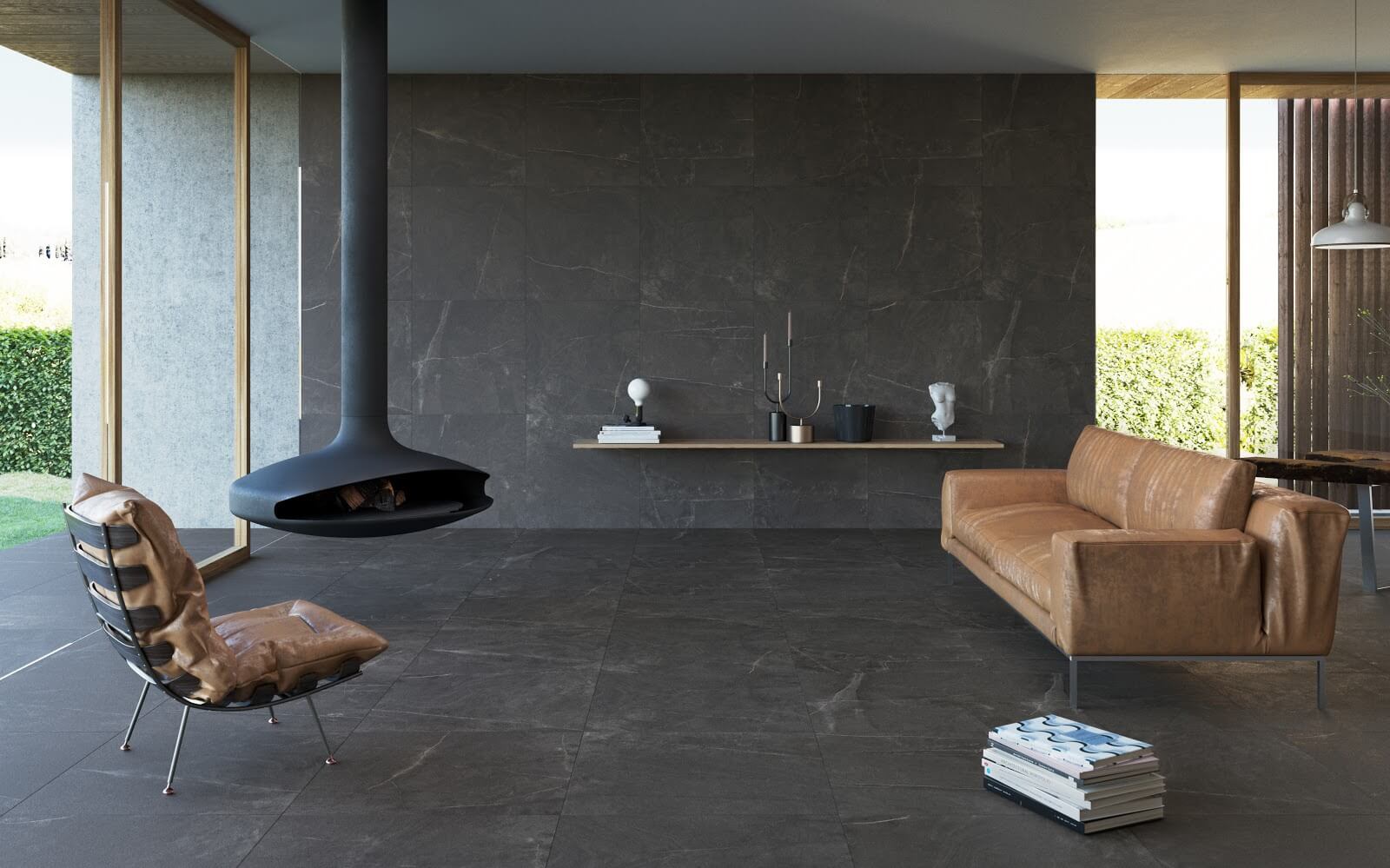
One of the biggest taboos for both minimalism and UD is putting rugs on the floor, especially in busy areas such as living rooms and kitchens. Rugs can collect dust and allergens and can be a hazard for tripping — all of which are also reasons that universal design suggests ditching your carpet for other flooring options. Rugs also cover up whatever flooring you currently have, possibly at the expense of your home’s aesthetic.
Ceramic tile is a durable and scratch-resistant material so you don’t need a rug to protect it from your furniture or foot traffic. Ceramic tile also provides a surface that’s easier to use with wheelchairs and walkers and requires significantly less maintenance than rugs or carpet.
When you opt to use tile flooring, universal design standards also suggest using large tiles to reduce the amount of grout lines for the ease of wheelchairs or walkers.
Tile is also versatile in look and style. For example, wood-look tiles visually resemble wood but offer the benefits of ceramic tile. Ceramic tiles are available in an endless array of colors, shapes, styles, and patterns (including custom options) so that you can create a one-of-a-kind space.
Find Harmony in Your Home
Homeowners that embrace the minimalist movement say that the “less is more” approach helps them find harmony in their home. The less you have in your home, the less you need to worry about.
As people continue to embrace universal design and minimalism, homes constructed for these trends will grow in demand. Tile’s low-maintenance durability makes it a popular material for these styles — which both emphasize concepts for making life easier — and now is the perfect time to embrace one (or both) of them in your home!

